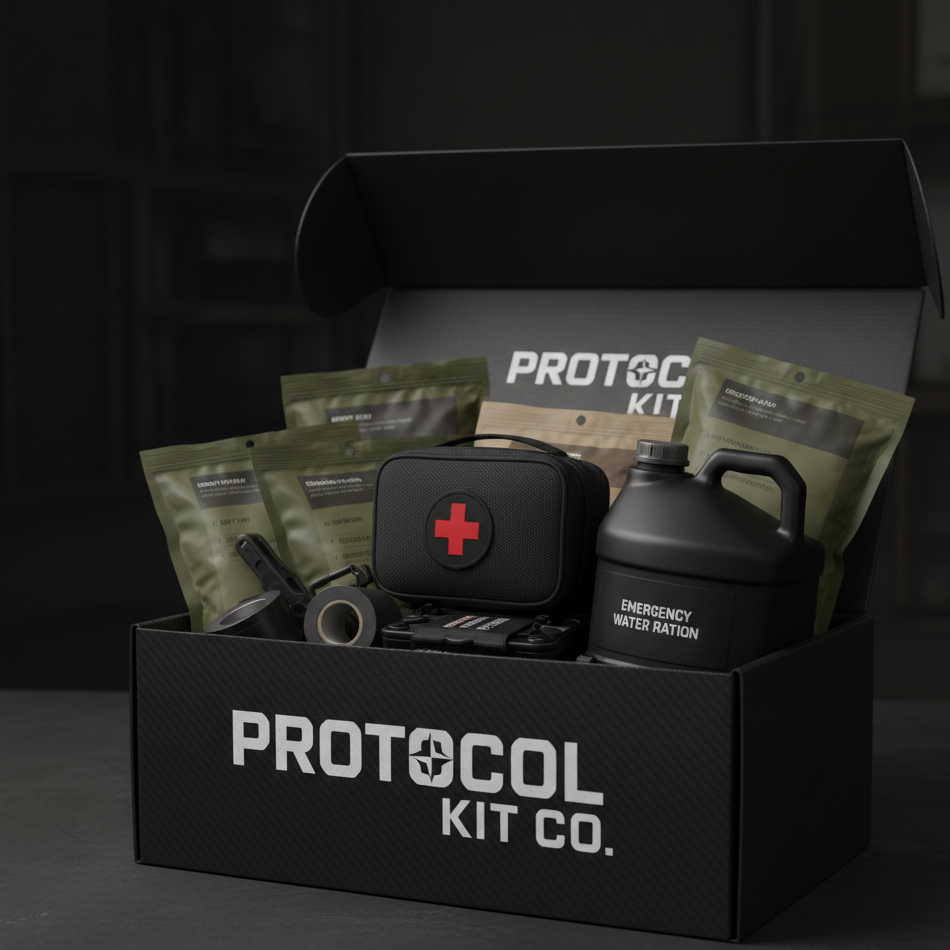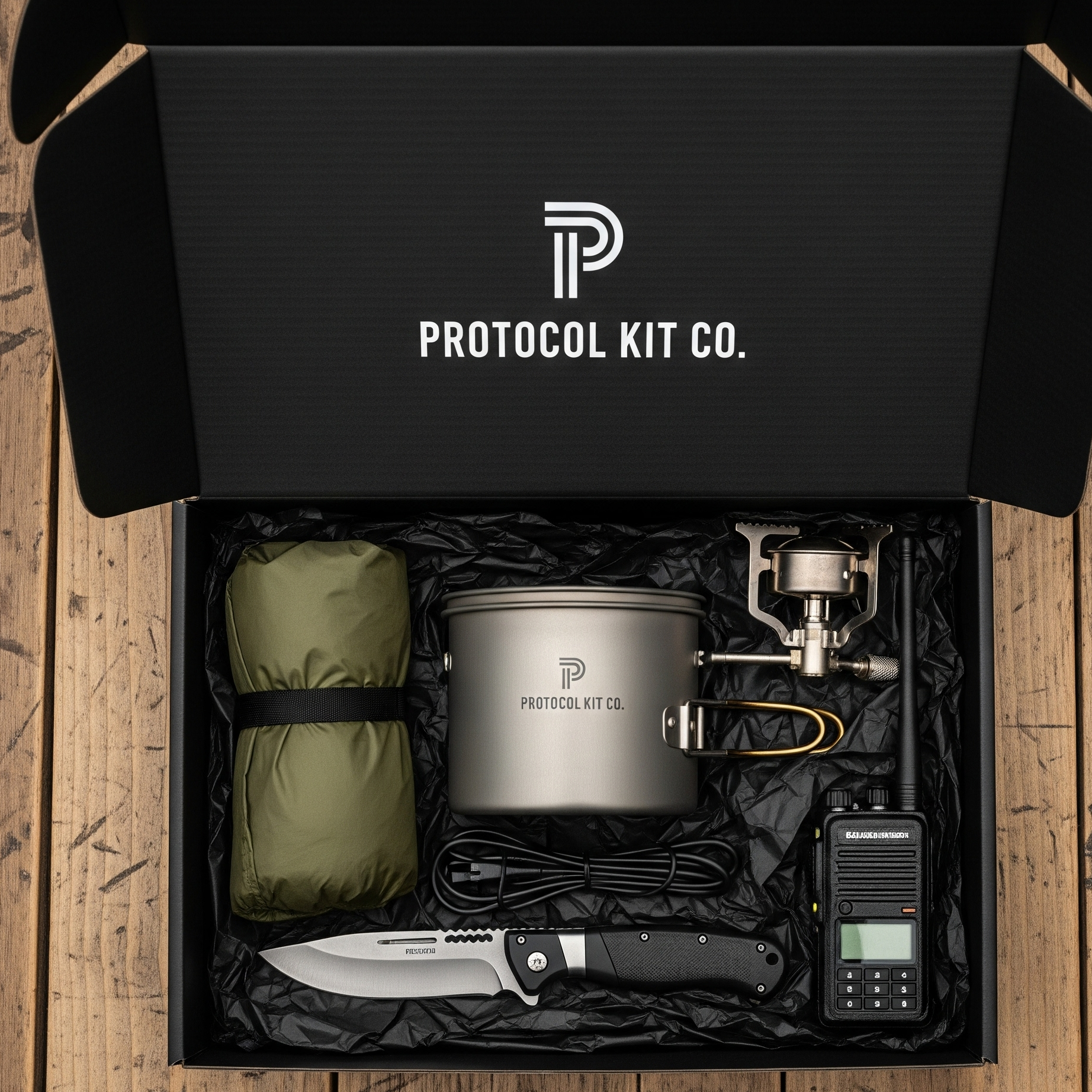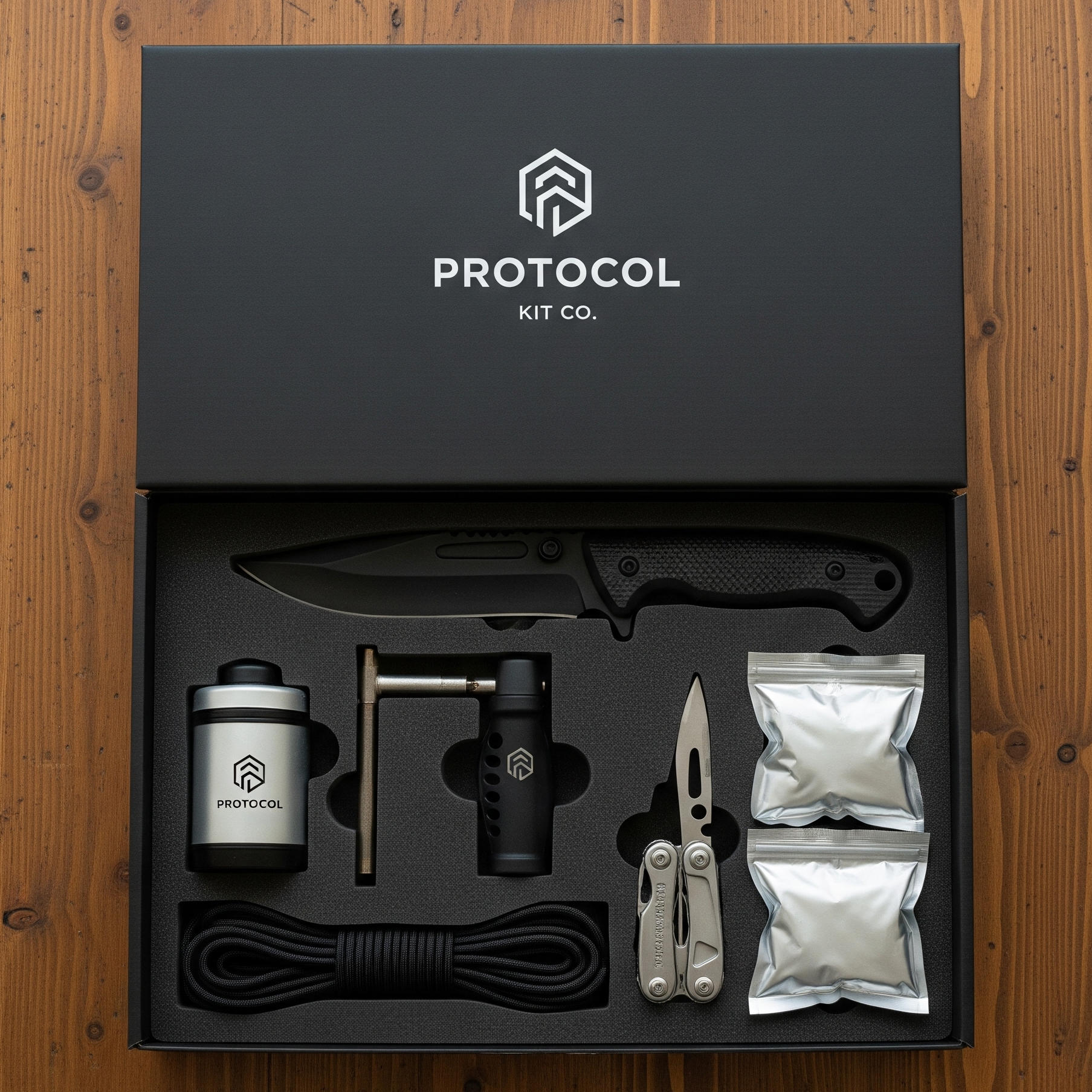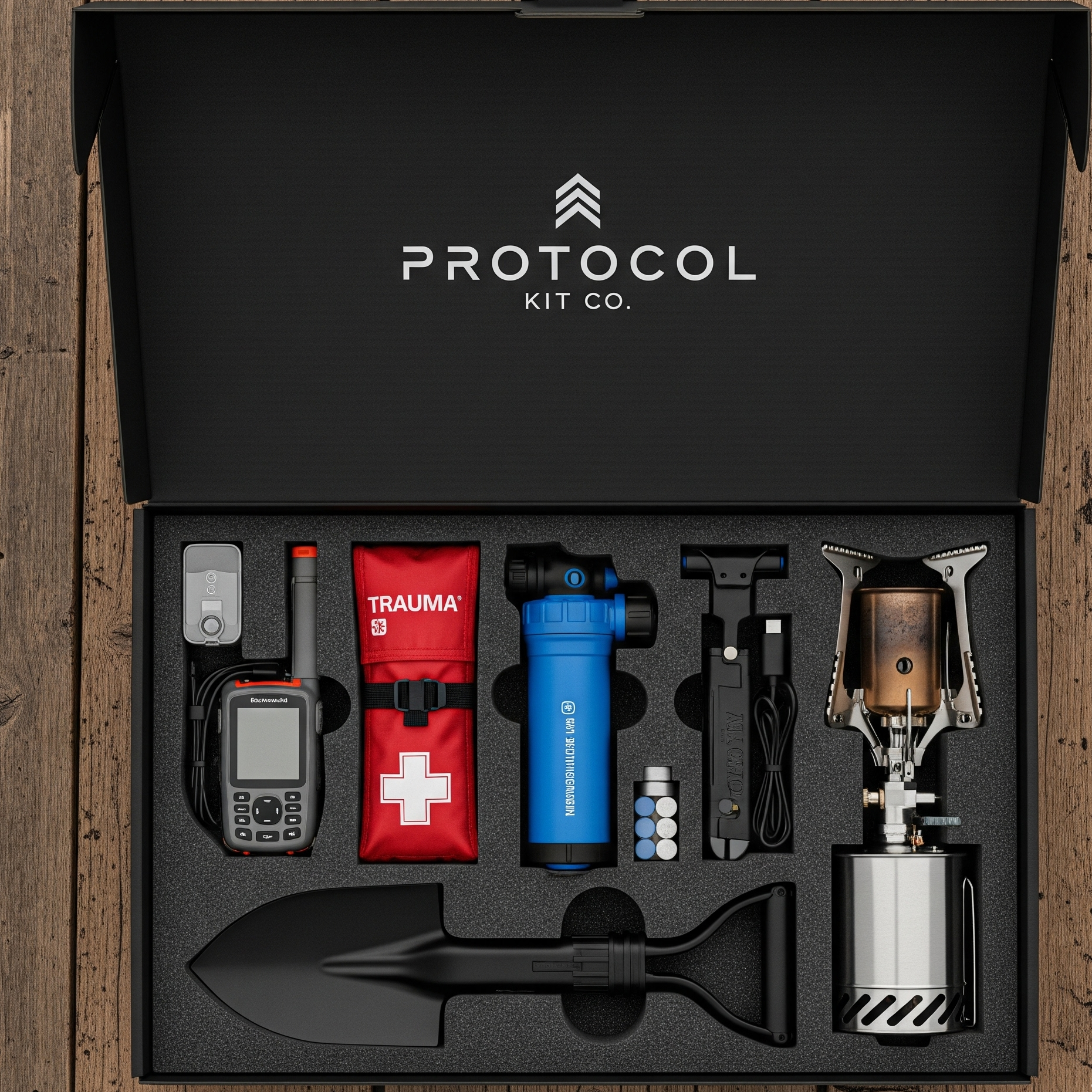The Ultimate Guide to Compressed Towel Tablets: The Survival Tool You Didn't Know You Needed
In the world of preparedness, every ounce of weight and every cubic inch of space matters. Imagine this: you are days into a remote hike when a sudden downpour soaks your gear, or an unexpected spill in your vehicle, miles from the nearest town, creates a sticky mess. Perhaps most critically, a minor injury requires a clean cloth, but everything you have is either dirty or too bulky to have been packed. In these moments, the solution is not a conventional towel, but a modern marvel of efficiency: the compressed towel tablet. Often called towel pills or coin tissues, these small, inert discs transform with just a few drops of water into a functional, durable cloth.1 This guide is the definitive resource for anyone serious about survival, camping, or emergency preparedness. It will deconstruct these "magic" towels, explore their myriad life-saving applications, analyze the market to help you choose the best ones, and deliver a critical safety warning that must not be ignored.
Deconstructing the "Towel Pill": What Exactly Are You Carrying?
To effectively integrate any tool into a survival kit, one must first understand its composition and construction. Compressed towels are no exception. Their simple appearance belies a range of materials and a manufacturing process designed for maximum efficiency.
What is a Compressed Towel?
At its core, a compressed towel is a full-sized towel made from absorbent fibers that has been dehydrated and subjected to immense pressure. This process reduces its volume by an astonishing 80% to 90%, compacting it into a small tablet, pill, or coin shape.3 This product goes by many names in the marketplace, including towel tablet, towel pill, coin tissue, magic towel, or micro towel, all referring to the same fundamental concept.3 The core value proposition is clear: providing the maximum utility of a towel for the minimum possible storage footprint, a key principle in survivalism, ultralight backpacking, and emergency preparedness where space and weight are at a premium.5
Anatomy of a Tablet: Materials Matter
The performance, feel, and reusability of a compressed towel are dictated entirely by its material composition. Understanding these differences is crucial for matching the right product to your specific needs.
-
Viscose Rayon: This is one of the most common materials used. Viscose is a fiber of regenerated cellulose, meaning it is derived from natural sources like wood pulp, bamboo, or soy.8 It is highly absorbent and biodegradable, making it a popular choice for budget-friendly, single-use towels often found in emergency kits.9 The empirical formula for this β-D-glucose polymer is $(C_6H_{10}O_5)_n$.8
-
100% Cotton: Often considered the gold standard, cotton provides superior softness, absorbency, and a familiar skin-friendly feel.10 Towels made from high-quality cotton, particularly those using a spunlace non-woven fabric technique, are more durable, less likely to shed lint, and can often be reused for light tasks.3 This makes them an excellent choice for users with sensitive skin or for applications where a more cloth-like texture is desired.5
-
Bamboo: A specific and popular type of viscose, bamboo is often marketed as a premium, eco-friendly option. It is known for its sustainability, natural properties, and soft yet durable texture.11
-
Lyocell: This is a high-end form of rayon, also derived from wood pulp, renowned for being exceptionally soft, strong, and absorbent. It is typically found in premium, reusable "upgrade" towels, such as those from the Lightload brand, which are designed for multi-use scenarios.14
The distinction between a "disposable" wipe and a "reusable" cloth is not arbitrary; it is a direct result of the material composition and manufacturing technique. A towel made from basic non-woven rayon is designed for single-use applications, much like a heavy-duty paper towel.15 In contrast, a product crafted from high-quality cotton spunlace or lyocell possesses the integrity to be rinsed, dried, and used again for light duties, functioning more like a thin washcloth.5 Knitted towels, which are essentially traditional terrycloth washcloths that have been compressed, offer the highest reusability but are also bulkier and more expensive than their non-woven counterparts.3
From Factory to Pocket: How Are Compressed Towels Made?
The transformation from a soft cloth to a hard tablet is a feat of industrial engineering. The process ensures the final product is not only compact but also hygienic and ready for use.
-
Material Preparation & Sterilization: The process begins with large rolls of the chosen raw fabric. For health and safety, this material undergoes a rigorous sterilization process. A common method involves boiling the fabric in 100°C water for 20-50 minutes, followed by industrial drying and disinfection with ultraviolet (UV) light.16
-
Folding & Molding: After sterilization, the fabric is precisely folded into a pre-press shape that matches the final desired form of the tablet.16
-
High-Pressure Compression: The folded material is then placed into a mold. A hydraulic press exerts immense force, compacting the fibers, expelling all air, and molding the fabric into its final, dense tablet shape. These shapes can range from simple circles and squares to novelty forms like hearts or stars.3
-
Packaging: Finally, each tablet is individually wrapped in a sealed package. This crucial step keeps the towel clean, dry, and protected from moisture, ensuring it remains compressed until it is needed. The quality of this packaging, whether it's waterproof plastic or simple paper, can significantly impact the product's shelf life, which can be as long as 3 to 5 years for well-packaged items.5
This multi-stage sterilization is a critical, yet often overlooked, feature. While many view these towels as a simple convenience, the hygienic manufacturing process elevates them to a legitimate piece of medical preparedness gear. An individually sealed, sterile towel is an ideal resource for cleaning a wound in an emergency, a far more critical application than simply mopping a spill.2
Just Add Water: How to Use Your Compressed Towel
The defining feature of a compressed towel is its ease of use. Activating it requires nothing more than a small amount of liquid, making it practical in almost any environment.
The Simple Three-Step Process
Deploying a compressed towel is a quick and straightforward process that takes only a few seconds.5
-
Unwrap: Begin by tearing open the individual sealed packaging to remove the compressed tablet.18
-
Hydrate: Place the tablet in water. A key advantage is that there is no requirement for a specific water temperature; cold, warm, or hot water will work equally well.5 Only a minimal amount of liquid is needed—a teaspoon or two (a few milliliters) poured from a water bottle into a cupped hand is often sufficient to start the process.2
-
Expand: The tablet will immediately begin to absorb the water and swell. Over the next 3 to 6 seconds, it will rapidly expand and soften. Once it has expanded, simply unfurl or manually stretch the towel to its full size, and it is ready for use.1
The activation process itself reveals a key survival attribute. The mechanism of action—rapid and significant water absorption leading to expansion—is a physical demonstration of the material's primary quality. This is not just a "towel"; it is a super-absorbent, compact medium. This inherent high absorbency is what makes it so versatile, enabling it to be used not just for wiping but also for critical tasks like wound care (absorbing blood), spill management, and even as a crude pre-filter for water.
Pro-Tips for the Field
While the basic process is simple, several techniques can enhance the utility of compressed towels in the field.
-
Direct Application for Spills: For cleaning up liquid spills, you can place the dry, compressed tablet directly onto the mess. It will absorb the liquid as it expands, containing the spill efficiently.20
-
Scent Infusion: For personal hygiene or to create a more refreshing experience, add a drop of lemon juice or a preferred essential oil to the water before hydrating the towel.11
-
Pre-Moistening for Quick Access: In situations where you need a wet wipe instantly, you can pre-moisten a compressed towel and store it in a small, reusable zip-top bag. This effectively allows you to create your own heavy-duty, customized wet wipe on demand.2
The Multi-Purpose Powerhouse: What Are Compressed Towels Used For?
The true value of a compressed towel in a survival kit is not just its long list of uses, but its ability to consolidate the functions of multiple, bulkier items. A single tube of tablets can effectively replace a roll of paper towels, a pack of wet wipes, a bundle of tinder, a washcloth, and a portion of a first-aid kit's gauze. This principle of packing items that serve multiple critical functions—hygiene, first aid, fire, and water purification support—is the hallmark of an efficient and effective preparedness strategy.7
Core Survival and Emergency Applications
In a crisis, versatility is paramount. A compressed towel can be adapted to serve numerous critical functions.
-
Hygiene & Sanitation: This is the most fundamental use. They are perfect for personal cleaning, washing hands and face, emergency diaper changes, or as a more durable substitute for toilet paper.2 Do not forget water usage needs
-
First Aid: This is a high-value application where hygiene is critical. Thanks to their sterile packaging, they can be used as a clean pad to wash abrasions and minor wounds, serve as a backup gauze bandage under tape, or be applied to a wound to help control bleeding.2
-
Firecraft: A dry towel made from natural fibers like cotton, bamboo, or viscose is an excellent fire starter. It can be easily fluffed up to create a tinder bundle that will readily catch a spark from a ferrocerium rod or other ignition source.9
-
Water Filtration: While not a purifier, a compressed towel can serve as an effective pre-filter. By straining water through the cloth, one can remove larger sediment, debris, and particulate matter before using a primary water filter or purification method like boiling, thereby extending the life of the main filter.7
-
Cooling: In hot environments, a towel soaked in cool water and applied to the neck, forehead, or wrists can be a crucial tool for regulating body temperature and helping to prevent heat exhaustion or heat stroke.9
-
Makeshift Gear: In a pinch, a durable towel can be cut or torn into strips to create makeshift cordage for tying or securing items. It can also be rolled tightly to fashion a wick for an improvised candle or used as a small signal flag.7
Travel, Camping, and Everyday Carry (EDC)
Beyond dire emergencies, compressed towels offer unparalleled convenience for a variety of everyday situations.
-
The Traveler's Companion: They are an essential item for backpackers, one-bag travelers, and anyone looking to minimize luggage weight and bulk. They are particularly useful in parts of the world, such as some European countries, where accommodations may not provide washcloths as a standard amenity.1
-
Campsite Utility: At the campsite, they serve countless purposes, from being used as a dish towel for cleaning cookware to wiping down condensation inside a tent or cleaning muddy gear.2
-
Vehicle & Gym Bag Staple: A tube of compressed towels kept in a vehicle's glove box, a gym locker, or a desk drawer ensures you are always prepared for unexpected spills, a quick post-workout wipe-down, or general cleaning needs.6
-
Beauty and Skincare: The hygienic, single-use nature of these towels has made them popular in professional settings like spas and beauty salons for tasks such as makeup removal and during facial treatments.5
The Prepper's Marketplace: A Buyer's Guide to the Best Compressed Towels
The market for compressed towels is vast and varied. Choosing the right product requires understanding where to look and how to compare the different options based on your specific needs and budget.
Where to Buy Compressed Towels
Compressed towels are widely available through several retail channels.
-
Online Megastores: The largest selection can be found on major e-commerce platforms like Amazon and Walmart. These sites offer a massive variety of brands, materials, package sizes, and price points, from bulk packs of 500 to small specialty tubes.24
-
Specialized Outfitters: Many websites dedicated to survival, emergency preparedness, and camping gear—such as ReadyHour, BePrepared.com, and Sirius Survival—offer compressed towels curated specifically for the needs of their audience. These products are often marketed for inclusion in bug-out bags and emergency kits.9
-
Brick-and-Mortar & Budget Options: For those who prefer to shop in person, compressed towels can often be found in the travel or beauty aisles of large retail stores like Target and Walmart.28 Budget-friendly options are also frequently available at dollar stores, though these are typically lower-quality, single-use versions best suited for non-critical tasks.15
Choosing Your Towel: A Comparative Analysis
An optimal approach for the serious prepper is not to choose just one type of towel, but to implement a tiered stocking strategy. This involves purchasing inexpensive, disposable cotton or rayon towels in bulk for general, high-volume needs like cleaning and spills.14 This supply is then supplemented with a smaller quantity of premium, reusable lyocell or bamboo towels reserved for critical, high-stakes tasks such as multi-day personal hygiene or first aid.14 The following table and analysis break down some of the top options on the market to help inform this strategy.
| Brand | Primary Material | Expanded Size | Durability/Reusability | Key Feature | Best For |
| Lightload Towels | 100% Lyocell | 12" x 12" | High (Reusable) | Largest size, extremely soft, tear-resistant |
Ultimate Survival, Multi-purpose Use 14 |
| Portawipes | 100% Bamboo Viscose | 8.5" x 9.5" | Medium (Light Reuse) | Smooth texture, biodegradable, strong for its thinness |
All-Around Performance, Eco-Conscious 14 |
| Prepared4X | 100% Bamboo | ~8" x 8" | High (Reusable) | Very durable, often comes with waterproof carry tubes |
Bug-Out Bags, Rugged Use 12 |
| BigOtters | 100% Cotton | 8.7" x 8.7" | Low-Medium | Individually wrapped, extremely low cost |
Budget Bulk, Single-Use Hygiene 14 |
| Ready Hour | 100% Rayon | 9.5" x 10" | Low (Disposable) | Very inexpensive, sold by survival suppliers |
Stockpiling, Emergency Kits 9 |
-
For the Ultimate Survivalist (Lightload): The higher price of Lightload towels is justified by their superior performance. Made from durable lyocell, they are large enough to be genuinely useful as a small towel, can be reused multiple times, and are strong enough to be torn into strips for cordage or bandages. This product functions less like a disposable wipe and more like a highly packable, reusable cloth, making it ideal for critical survival applications.7
-
For the All-Around Prepper (Portawipes/Prepared4X): Bamboo-based options from brands like Portawipes and Prepared4X represent a perfect balance of performance, cost, and sustainability. They are stronger and softer than basic rayon towels and are fully biodegradable. A significant value-add from brands like Prepared4X is the inclusion of waterproof metal carrying cases, which protect the tablets and make them ideal for rugged use in a bug-out bag or get-home bag.13
-
For the Budget-Conscious Stockpiler (BigOtters/Ready Hour): For those looking to build a deep supply of emergency hygiene products, inexpensive cotton or rayon towels are the most logical choice. Brands like BigOtters and Ready Hour offer bulk packages at a very low cost per unit. While not as durable as their premium counterparts, they are perfectly adequate for single-use tasks and are ideal for stocking vehicle kits, office drawers, or large family emergency supplies where quantity is a primary concern.9
A Life-Threatening Mistake: What Happens If You Swallow a Compressed Towel?
This section addresses the most critical safety issue associated with compressed towels. The information is not theoretical; it is based on established medical principles regarding foreign body ingestion and obstruction.
A Clear and Unmistakable Warning
WARNING: A compressed towel is NOT candy. Due to its resemblance to a breath mint or piece of candy, it poses a significant danger to children and unaware adults. Accidentally swallowing a compressed towel is a life-threatening medical emergency. Seek immediate professional medical help if ingestion occurs or is suspected..6
These items must be stored securely and kept out of reach of children at all times.
The Science of the Danger: Expansion Equals Obstruction
Herein lies the critical paradox of the compressed towel: the very property that makes it an invaluable tool is precisely what makes it a life-threatening hazard if ingested. The "magic" of its rapid expansion with minimal moisture becomes a catastrophic biological event inside the human body. Its usefulness and its danger stem from the exact same physical property.31
While there are no specific medical case studies on the ingestion of a compressed towel, there is a tragic and extensive body of medical data on the ingestion of chemically similar and physically analogous items: super-absorbent "water beads".31 Like these beads, a compressed towel is made of super-absorbent fibers. Once it enters the moist environment of the gastrointestinal (GI) tract, it will immediately begin to absorb fluids and expand. A tablet designed to expand into a 10-by-10-inch cloth can easily form a mass large enough to cause a complete and potentially fatal blockage (obstruction) in the esophagus, stomach, or intestines.32 This can lead to severe complications, including tissue death, perforation of the bowel, and systemic infection.34 The risk is so well-understood that even medical devices designed to expand in the stomach, like the Cytosponge, are administered on a string for guaranteed retrieval and under strict professional supervision.36
Recognizing the Signs and Taking Immediate Action
If ingestion is witnessed or suspected, do not wait for symptoms to appear. Go to the nearest hospital emergency department immediately. It is critical to inform the medical staff exactly what was swallowed, as the material may not be visible on a standard X-ray.31 The signs and symptoms of a GI obstruction are severe and require urgent medical attention.39
-
Difficulty swallowing, drooling, or an inability to swallow one's own saliva
-
Pain in the throat, chest, or abdomen
-
Persistent vomiting, which may contain blood or a substance resembling coffee grounds
-
Severe abdominal pain, cramping, or swelling
-
Inability to pass stool or gas (constipation or obstipation)
-
Fever or other signs of infection
The Verdict on Compressed Towels
Compressed towels are a marvel of modern material science and a prime example of an efficient, multi-purpose survival tool. Their ability to pack the function of a full-sized cloth into a coin-sized tablet makes them an invaluable and affordable addition to any emergency kit, bug-out bag, camping pack, or travel case.7
The key to unlocking their full potential lies in knowledge. An effective prepper understands the need to choose the right material for the intended task, from a disposable rayon wipe for a simple spill to a reusable lyocell cloth for critical first aid. They recognize the towel's myriad uses beyond simple cleaning, leveraging it for firecraft, water filtration, and cooling. Most importantly, they understand and respect the product's inherent danger. A compressed towel in your kit can be a lifesaver, but only when used with the knowledge, caution, and responsibility it demands. Pack smart, be prepared, and stay safe.




